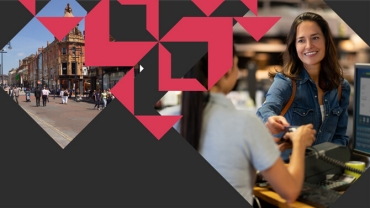
The short term consumer shifts that stuck
Trapped at home and looking for ways to fill the time, consumer demand created some big winners over the past year. The chance to escape into virtual worlds saw a 14.5% surge in video game revenue. Over-the-top streaming services boomed, outpacing global growth and are expected to increase by 14% in 2021. In both cases some fortuitously timed launches hit at just the right point, but they remain well positioned even if enthusiasm and engagement hours fall back.
All advertising experienced a tough second quarter as the UK went into an initial strict lockdown, with companies reducing spend in many areas due to such high uncertainty - compounded by some brands (e.g. travel sector or movies) pulling advertising since their services could not be consumed anyway. However, advertising has seen a recovery since then, with digital advertising in particular outperforming expectations to grow by 5% in 2020, with digital display growing by 11%. Many of the retail and consumer brands had shifted their focus to advertising online and through social media. And they were finding advantages in the format. Lisa Hooker, Leader of Industry for Consumer Markets explains; “For retail and consumer brands, social media is a really effective marketing tool. For example with furniture, print media would confine a retailer to a single image, but on social media you can showcase your full range.”
That shift to online for consumers and brands has stuck. In both the retail and media spaces, digital marketplaces are here to stay.
How digital can enhance real world experiences
It’s not just commerce, but community and connection that makes online channels a draw. As confidence increases and people venture out more to participate with in-person experiences, such as cinema, exhibitions and live music, that connection can follow them into the real world thanks to their smartphones. 5G will offer comparative speeds to fibre broadband, meaning there are increasing opportunities to use technology to really make big events worth leaving the home for. Conferences and events have already been experimenting with hybrid virtual / in person models during the lockdowns, but now there’s the option to explore opportunities that bring the best of both worlds together.
“We’re seeing stadia and sports really looking to provide enhanced, immersive experiences that are centred on the individual consumer. For example, in Formula 1 you could be in stands and select which driver’s engine stats you can view on your phone - or have live streamed close-ups on your phone giving you great views of the action wherever you are in the stands. Elsewhere there’s opportunities to use in-app calling to share the experience in the moment. With pent up demand after the pandemic, it’s about offering an enhanced in-person experience.”
Rolf Meakin, Strategy& Partner in Technology, Media and Telecoms at PwC UK
To make the most of that digital opportunity, however, will require agility on the part of organisations as well as the ability to use data and digital to offer a personalised experience.
The power in the personal
Consumers see value in the personalised experience. But they’re also increasing their expectations. If they’re engaging with an organisation’s online or digital presence - and giving up their data in exchange - then they expect a seamless service across their whole experience.
“It’s omnichannel. Shoppers don’t distinguish. They expect click and collect, they’ll shop online or instore. So retailers should consider that consumer journey - how stores aren’t just about sales, but part of their marketing repertoire. What else do they want in them? Technology to help consumers buy online in store? They should explore ways to make it fun as much as convenient and local.”
Lisa Hooker, Leader of Industry for Consumer Markets at PwC UK
That seamless experience and personalisation is driven by data. And therein lies a challenge. Meakin says “Really good personalisation needs permission. With services such as an online streaming service, you sign up and opt in. But when we broaden the scope to include how we plan to use VR, smartphones, headsets and so on, then the challenge is how do you manage those privacy, trust and permission issues. Integrating permissions across channels - being responsive to when and where people opt in - is proving tough. But it needs to be seamless to reinforce trust on the part of the consumer.”
Digital led competitors have long been able to take advantage of their relative agility and ability to turn conventional business models on their heads. To compete, more traditional businesses need to think beyond just their digital platforms and data strategy to the wider considerations this might mean. It’s a shift in resourcing and the team mix needed - bringing in more data and digital experts to help drive change.
With consumers ready to spend, but more aware than ever of the different options available to them, there’s a huge opportunity to stand out from the crowd. To make the most of technology, innovation and awareness of consumer behaviour and attitudes should offer something that doesn't just meet immediate needs, but predicts and helps them realise what they might want next.
Contact us

Leader of Industry for Consumer Markets, PwC United Kingdom
Tel: +44 (0)7802 882562




















